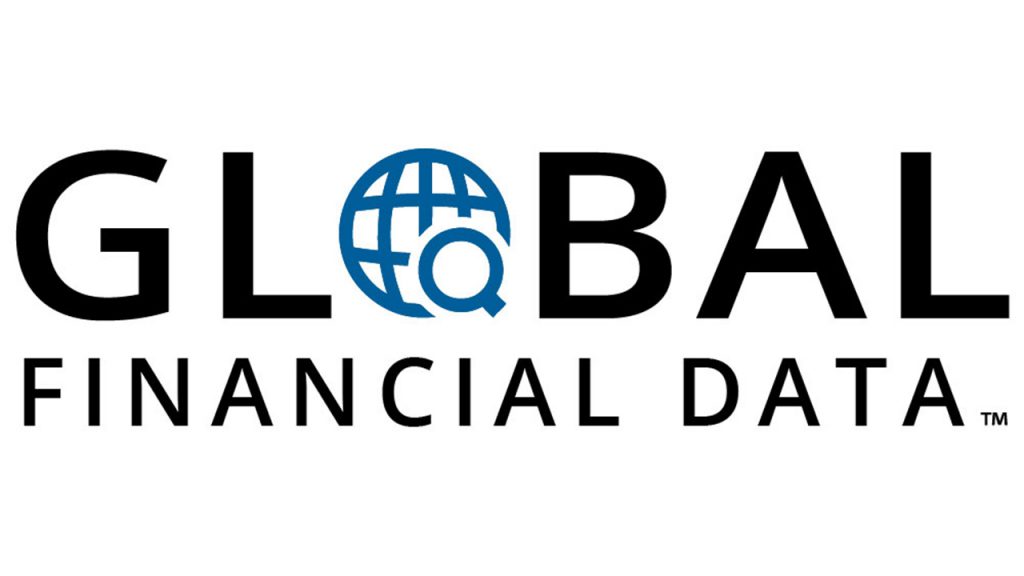 It was 100 years ago, in 1914, that the Gold Standard died. When World War I began, most countries went off the Gold Standard and attempts to return to a Gold Standard since have all failed. Some people have called for a return to the Gold Standard as a way of disciplining governments and ensuring that they do not inflate their way out of their current fiscal problems. If it were only that easy.
What many people don’t understand is that in the long run, the International Gold Standard was a very brief phenomenon, and the fact that the world moved to a Gold Standard in the late 1800s was a sign of weakness in the role of gold and silver in the economy, not of strength. The reality was that Europe was on a bimetallic standard, not a Gold Standard, from the Middle Ages until World War I, and gold triumphed in the nineteenth century because bimetallism had failed. This should have been taken as a sign that the gold standard too would inevitably fail, not that it was the result of teleological inevitability.
It was 100 years ago, in 1914, that the Gold Standard died. When World War I began, most countries went off the Gold Standard and attempts to return to a Gold Standard since have all failed. Some people have called for a return to the Gold Standard as a way of disciplining governments and ensuring that they do not inflate their way out of their current fiscal problems. If it were only that easy.
What many people don’t understand is that in the long run, the International Gold Standard was a very brief phenomenon, and the fact that the world moved to a Gold Standard in the late 1800s was a sign of weakness in the role of gold and silver in the economy, not of strength. The reality was that Europe was on a bimetallic standard, not a Gold Standard, from the Middle Ages until World War I, and gold triumphed in the nineteenth century because bimetallism had failed. This should have been taken as a sign that the gold standard too would inevitably fail, not that it was the result of teleological inevitability.
The discovery of America released not only the gold of the Americas which the Spaniards seized, but the silver of Potosí and Mexico which supplemented the silver mines of Germany that produced silver Thalers. Galleons filled with silver crossed the seas to Europe and China every year, causing global inflation in the seventeenth century.
The chart, which uses the gold/silver ratio for the United Kingdom through 1800 and the United States after that, shows that between 1250 and 1850, the value of gold relative to silver gradually increased, rising from around 10 to 1 in 1250 to 15 to 1 around 1850. Despite all the discoveries of gold and silver, the seizing of gold and silver by conquerors from the conquered, or the changes in the global economy during those intervening 600 years, the ratio of the price of gold to silver saw no dramatic changes.
It wasn’t that countries chose to move to the Gold Standard because it was the right thing to do, but because they had no choice. The collapse in the price of silver made silver a token commodity. The relationship between gold and silver that had held for 600 years was irrevocably broken. Although almost every developed country was on the Gold Standard by 1900, few realized it was the lull before the storm. When World War I broke out in August 1914, the Gold Standard was dead.
Attempts to resurrect the Gold Standard after World War I, World War II and today were doomed to fail because the relationship between gold and silver had been changed forever. Could a country like the United States return to a Gold Standard? In theory, yes, as I have demonstrated in my paper “Returning to the Gold Standard in Five Easy Steps.” In practice, it is highly unlikely.
 If you were to ask most people which country suffered the worst inflation in history, they would answer Germany, since Germany’s hyperinflation after World War I is probably the most famous. By 1923 when Germany finally put an end to its hyperinflation, it took 1 trillion old Marks to get 1 new Rentenmark. As devastating as the German inflation was, there were three hyperinflations that made the German case look amateurish: Hungary in 1946, Yugoslavia in 1992-1993 and Zimbabwe from 2004 to 2009. Of these three, Hungary’s was the worst of them all.
Hungary was no stranger to hyperinflation. The Austro-Hungarian Empire was on the losing side of World War I and was broken up after the war. The new nation of Hungary lacked the proper government structures, so it turned to printing money to fill the hole in its budget. Before World War I, there were 5 Kronen to the US Dollar, but by 1924 there were 70,000 Kronen to the US Dollar. So Hungary replaced the Kronen with Pengö at the rate of 12,500 Pengö to the Kronen in 1926.
If you were to ask most people which country suffered the worst inflation in history, they would answer Germany, since Germany’s hyperinflation after World War I is probably the most famous. By 1923 when Germany finally put an end to its hyperinflation, it took 1 trillion old Marks to get 1 new Rentenmark. As devastating as the German inflation was, there were three hyperinflations that made the German case look amateurish: Hungary in 1946, Yugoslavia in 1992-1993 and Zimbabwe from 2004 to 2009. Of these three, Hungary’s was the worst of them all.
Hungary was no stranger to hyperinflation. The Austro-Hungarian Empire was on the losing side of World War I and was broken up after the war. The new nation of Hungary lacked the proper government structures, so it turned to printing money to fill the hole in its budget. Before World War I, there were 5 Kronen to the US Dollar, but by 1924 there were 70,000 Kronen to the US Dollar. So Hungary replaced the Kronen with Pengö at the rate of 12,500 Pengö to the Kronen in 1926.
Hungary was spared much of World War II’s destruction until 1944 when it became a battleground between Russia and Germany, and half of Hungary’s industrial capacity was destroyed and 90% was damaged. Transportation was difficult because most of the rail lines and locomotives had been destroyed. What remained had either been taken by the Nazis back to Germany or seized as reparations by the Russians.
Prices were already rising in Hungary after the war because production capacity fell due to the destruction. With no tax base to rely upon, the Hungarian government decided to stimulate the economy by printing money. It loaned money to banks at low rates who then loaned the money to companies. The government hired workers directly, they provided loans to consumers, and they gave money to people. The government literally flooded the country with money to get the economy going again. Money may not have grown on trees, but it certainly flowed off the printing presses.
The banknotes would have the same picture on them, but be a different color. The Milliard Pengö was lavender, the Milliard Milpengö was blue and the Milliard Bilpengö was green, but except for the color, the notes looked alike. Someone who lived through the hyperinflation said they gave up on looking at the denominations and when someone bought something the cashier would say that their bread cost them two blues and a green. The Milliard Bilpengö, pictured here, is the highest denomination note ever printed since it was equal to a Billion Trillion Pengö. Unfortunately, at the end of the inflation, it was only worth about twelve cents USD.
The Forint replaced the Pengö on August 1, 1946 at the rate of 400,000 Quadrillion Pengö to the Forint; however, the stabilization worked, and prices remained relatively stable in Hungary into the 1960s. As for all the old Pengö, they were thrown away because they were worthless.
So did the inflation achieve the goal of stimulating production? The hyperinflation did raise Hungary’s industrial capacity, got the railroads moving again, and got much of the capital stock replaced. However, workers lost 80% of their wages and creditors were wiped out.
Politically, however, Hungary’s fate was sealed by the Communists, who eventually seized power and turned the Republic of Hungary into the People’s Republic of Hungary in 1949 with a new constitution modelled on that of the Soviet Union.
Global Financial Data is happy to announce that it has added over 1600 new exchange rate files to the GFDatabase, doubling the number of exchange rate files within the database.
All of the new files are cross exchange rates between currencies other than the United States Dollar with over 100 cross rates to the Euro, 70 cross rates to the British Pound, 50 to the Canadian Dollar, and so forth. Virtually all of the series have daily data that extend back to 1900. Many of the series have monthly data that extend back into the 1800s.
If you know the currency codes that are used by the ISO, you can put together the symbols for these currencies. The first three letters are the ISO currency code for the currency the data are in terms of, while the second group of three letters is how many currency units are needed to obtain the primary currency. As an example, CADEUR would tell you how many Euros are obtained for a Canadian Dollar. EURCAD would tell you how many Canadian Dollars are obtained for a Euro.
 Global Financial Data has updated a number of its long-term government bond series. These updates include both the 10-year Benchmark Bond files as well as the Total Return Series for Government Bonds. Data for several of these countries, such as Austria, Denmark, France, the Netherlands, Russia, Spain and Sweden now extend back to the 1700s. Other series have been extended further back into the 1800s and have improved their granularity.
During the past few years, Global Financial Data has added extensively to its Fixed Income Securities Database which now includes over 6000 files. This database includes data for both corporate and government bonds from New York, London, Paris, Amsterdam and other exchanges. All of these exchanges were international in their coverage, listing bonds from countries throughout the world.
Global Financial Data has updated a number of its long-term government bond series. These updates include both the 10-year Benchmark Bond files as well as the Total Return Series for Government Bonds. Data for several of these countries, such as Austria, Denmark, France, the Netherlands, Russia, Spain and Sweden now extend back to the 1700s. Other series have been extended further back into the 1800s and have improved their granularity.
During the past few years, Global Financial Data has added extensively to its Fixed Income Securities Database which now includes over 6000 files. This database includes data for both corporate and government bonds from New York, London, Paris, Amsterdam and other exchanges. All of these exchanges were international in their coverage, listing bonds from countries throughout the world.


